Author: Randy McNair
Page 2 of 4
RANDY’S BIOGRAPHY
Author: Randy McNair
My name is Randy McNair. My professional name is D.J. La Ran La Rock. I have been a professional Disc Jockey most of my life. I was robbed in 2005 by an evil Landlord that stole my business. I’m still a professional Disc Jockey as I returned to college to achieve a B.A. in Media Arts & Communications. I was born in the South Bronx, New York. In my childhood years I grew up in Brooklyn, The Bronx, and Harlem, New York. I attended Theodore Roosevelt and William H. Taft High Schools in The Bronx. I started collecting music (45rpm vinyl discs/33rpm vinyl albums) at the age of 15. In 1969 on Tremont Avenue in The Bronx, I witnessed a Club Disc Jockey using two turntables to entertain a friendly audience in a crowded nightclub. Thus, I was inspired to use turntables as a media art to transfer vinyl records to reel to reel tapes and cassettes.
In 1971, my family moved to Nyack, New York, there I graduated from Nyack High School. I was there when there was the tragic incident of a school bus driver was foolish enough to challenge a freight train. That accident destroyed the life of 27 students. In met a fellow named John Haupt and together we started performing as Disc Jockeys at nightclubs, public events, and private events. In 1972, John went the Columbia School of Broadcasting in Manhattan. I continued to perform at New York and made a name for myself. My cousin Paul Brown and I use to rock the nightclubs and parks in the middle 1970’s. My oldest brother Jimmy Davis McNair aka Uncle Jimmy Mack started to MC for the events and the McNair became known for quality entertainment. I moved to Peekskill, New York.
In the late 1990’s, as Jimmy Mack became a favorite at The Apollo , The Uptown comedy Club and BET International Network, Jimmy Mack and partners created the Brothers Production Entertainment Company. In 2000, I become the Musical Director for the Brothers Production. I played the music pre-show and after the show festivities. I also played the entrance and exit music for performers live on stage. Jimmy Mack bought a like famous comedians and singers to Peekskill, New York. One Station Plaza and The Paramount Theatre showcased performer such s Hamburger, Freddie Ricks, Jimmy Walker, and Tracy Morgan.
James Davis McNair aka Uncle Jimmy Mack was in that tragic accident with Tracy Morgan in 2014. Uncle Jimmy Mack was a funny person since childhood. As his brother Randy, I will never forget how we grew up together as we are two (the oldest) of seven children of Gladys’ and Monique McNair. I will never forget how we performed together as professionals throughout the years. In Peekskill, New York I was robbed of my business in 2005 by an evil landlord. Jimmy Mack was also robbed of all his property by an evil landlord a few years before me. The landlord, Mr. Boyle disappeared and so did all of my D.J. equipment, rare music, new music, rare movies, new movies, clothes, and furniture. Today, I still seek Mr. Boyle, to bring him to justice. Currently, while I am a student of Empire State College, I am writing a book that will expose the evil of Mr. Phillip Boyle Jr. and Peekskill, New York. I praise the Lord (Jehovah God, that I had good parents to instill in me, to believe in Jehovah God, to help anyone I can, to respect everyone and to educate myself as much as I can, while trying to enjoy the best things in life.
WORK CITED
Photo of 45 RPM Vinyl Records. Available at: Google.com
RANDY’S BIOGRAPHY
M2 CROSSING THE BORDERS OF GENRE IN MEDIA ART PART 2
M2 CROSSING THE BORDERS OF GENRE IN MEDIA ART PART 2
Author: Randy McNair
Science Daily says Computer Animation “is the art of creating moving images via the use of computers”. 3D computer Graphics is basically use to create 3 Dimension effects in films. The original 2D computer Graphics that was mainly used for low bandwidth life like needs. 3D computer Graphics can also be used for calculations of geometric data and storing 2D images. 3D computer Graphics is a component of CGI (Computer Generated Imagery.
FMV (Full Motion Video) is known as prerecorded video. Television pre-recorded, video games, and animation are components of FMV. The studio quality of FMV has a high grade of quality than real-life sequences due to the digital re-mastering of FMV projects. Morphing is the special effects digital technique used in animation and films to transform images to a seamless formation. Slow motion effects is one the features of Morphing.
Scientific Visualization are components of computer graphics with interface design uses images to project data to users. Scientific Visualization is a form of data mining that produces abstract images. Bioinformatics, Chem-informatics, Medical Imaging, and Desktop programs are products of Scientific Visualization processes and applications that are created with professional effects. Application software is computer software that enables the user to give commands to the computer to perform any desired task. Media Players, Word Processors, and Spreadsheets are common examples of Application Software.
With digital eyes says Digital Art is the combination of different tools other than tradition tools used by artists to create their own visions, emotions, and messages. Computers and photography is two the mediums used by Digital Artists produce visions, form, color, rhythm, and composition. Digital painting, Digital Photography, Darkroom, and Fractals, are basic forms of Digital Arts. Digital Artists create Personal Imagery by adopting and exploring modern culture’s digital technology.
Computer Art is using computers to produce any type of artwork. Computer Art can consist of image, sound, animation, CD-ROM, DVD-ROM, videogames, websites, performance, gallery installations and algorithm. In 1958 at an air-defense base, George Petty’s pin-up girl was the first human image was put on computer. In 1962 the exhibition of Desmond Paul Henry’s Drawing Machine was displayed in London at the Reid Gallery. In the 1960’s many artists began using the computer as a tool of creativity.
In 1965, the Technische Hochshule (Generative Computergrafik) in Stuttgart, Germany, and the Howard Wise Gallery (Computer Generated Pictures) in New York, sponsored the earliest exhibitions of Computer Art. In 1968 Cybernetic Serendpity, one of the most famous exhibitions of Computer Art, that was displayed in London at the Institute of Contemporary Arts. Output devices on computers began to surface in 1960 with Stromberg Carlson’s SC-4020 microfilm printer, which produced 35-mm micro film animation and digital art formats.
Other Output devices such as the Dot Matrix Printer in 1970, that operated like a typewriter and created arbitrary graphics, and The Inkjet Printer in 1976 that supplied digital color for software packages of the computer. The Adobe Systems that were created in 1982 produced image manipulation software, drawing painting, digital fonts with its popular PostScript language. The vector drawing program of Adobe Illustrator was created in 1987. In 1990 Thomas and John Knoll designed the Adobe Photoshop for Mac Intosh computers. In 1993 Adobe Photoshop was used in DOS /Windows platforms. In the 1970’s a new the media art technique became known as of Robot Painting, which consisted of machine controlled artist grade paints and brush strokes. Professor Harold Cohen of UCSD created the first artificial intelligence artist that was a robot painter named AARON. In 1992, a 11’ x 11’ painting machine was introduced to the media art world by Ken Goldberg of UC Berkeley.
The Gertrude Stein Repertory theatre (GSRT) produces DPI (The Digital Performance Institute). The DPI introduces new media performance in the theatre with digital media technologies, stage artists, study guides on entertaining techniques, multi-lingual data bases, film editing, mobile projections, to create scripts, set, and characters. The staff of GSRT includes video editors, computer programmers, photographers, animators, costume designers, and stage directors. GSRT has Distance Learning Programs that teaches digital performing arts.
Computer Animation, Digital Art, Computer Arts, and GSRT’S Digital Performing Artists, are just some of the outstanding media art genres in the world of Media Digital Technology.
REFERENCES
Science Daily. Computer Animation. Wikipedia, the free encyclopedia. 10, February 2015. Available at: http://www.sciencedaily.com/articles/c/computer_animation.htm
Holt, Jeri. What is Digital Art? Holt Digital Designs. 10, February, 2015. Available at: http://www.withdigiteyes.com/pgs/digart.htm
Wikipedia. Computer Art. Wikipedia, the free encyclopedia. 10, February, 2015. Available at: https://en.wikipedia.org/wiki/Computer art
Gertrude Stein Repertory. Digital Performance/The New Dramaturgy. Gertrude Stein Repertory Theatre. 10, February, 2015. Available at: http://www.gerstein.org/dpi.htm
Photo: Google.com/artsnova.com
Sequences of Charlton Heston and Kara escaping from “Planet of the Apes”
Author : Randy McNair
Work Cited
Google.com. Planet of the Apes. 20th Century Fox. AJPAC Productions. 1968 Available at: http://www.google.com/images of planet of the apes. 2015
PUTTING INTO PRACTICE
Author: Randy McNair
Sequences of Sean Connery and Ursula on Dr. No’s Island in the Movie: Dr. No
Work Cited
Google.com. Dr. No. Broccili & Saltzman. Eon Productions. Great Britain. 1962 Available at: http://www.google.com/search/photos+sean+connery+with+ursula+andress=biw1024
PUTTING INTO PRACTICE
CROSSING THE BORDERS OF GENRE IN MEDIA ART
WAGNER’S ART, FRENCH SYMBOLISM, & ITALIAN FUTURISTS
Author : Randy McNair
In 1849 Richard Wagner a German Composer of the Opera, used the term Gesamtkunstwerk in two of his essays, “Art and Revolution” and “The Artwork of The Future”. The German term Gesamtkunstwerk, can be referred as “total work of art, idea work of art, universal art, synthesis of the arts, and comprehensive artwork”. Gesamtkunstwerk in English is known as aesthetics. Wagner’s essays expressed his media art skills to expose drama and folk legend as part of historical culture.
In the 20th Century during the Renaissance the term Gesamtkunstwerk was connected the architectural work of artists such as Michaelangelo, and Robert L. Delevoy. Art Nouveau was also known as Gesamtkunstwerk. Symbolism is the term used to describe a “symbol of faith”. Symbolism is connected to the Greek terminologies of “Symbolus, a sign of recognition” and “Symbolon, an object cut in half that constitutes a sign of recognition”.
In the 1880’s a French painter named Jean Moreas use the word “Symbolist” to describe his Manifesto with the work of three poets known Baudelaire, Mallarme, and Valery. As he produced the “Symbolist Manifesto” (“Le Symbolisme”) in September of 1886. Moreas made his point clear “symbolism was hostile to plain meanings, declamations, false sentimentality, and matter-of –fact description”. He believed Symbolists was artists that projected and described absolute truths through their media works of art.
Symbolism was also an impulsive movement against the anti-idealistic styles of naturalism and realism. Symbolism projected spiritual, imaginative, and idealistic ideas of media art. Joris-Karl Huysmans a writer that started his work as a naturalist, conformed to Symbolism through his conception of spirituality and religion. In the 1890’s a popular promoter of Symbolism known as Josephin Peladan, was an occultist, literary, and art critic that created Salon de la Rose which presented exhibitions of music, writing, and avant-garde art.
In 1909 Italian Futurism also known as Futurismo , was a social and artist revolution inspired Filippo Tommaso Marinetti. Futurism focused on “speed, technology, youth, and violence, with cars, aeroplane, and the industrial city”. Futurism was a movement and a spiritual awakening of French men to express their own ideas through media art techniques of music, theatre, fashion, sculpture, graphic design, performance, dance, literature, architecture, and painting, etc. Futurists began publishing manifestos of cooking, clothing, painting, religion, and architecture.
Futurists developed a painting style Divisionism, created by Giovanni Segantini, that consisted of a combination of light and color painted into a dimension o stippled dots and stripes. Carra’s painting of funeral the Anarchist Galli in 1910-1911, an urban scene on canvas the exhibited police battling rioters. With the combined artistic efforts of Cubism and Futurism, Dynamism techniques set the trends for the creations of painting masterpieces to consist of moving objects and rapid vibrations. Unique Forms of Continuity in Space, is a historical example of three dimensional sculptures created by Boccioni in by
In 1914, jealousy and envy created resentment between the Futuristic Artists of Italy. There was no unity between The Florence Group that resented the works of Marinetti and Boccioni that gained the most recognition in the world of Futurism. With the outbreak of World War 1, Italian Futurism no longer existed. The work of Marinetti revived Futurism after the war. This revival was known as “Il Secondo Futurismo” (Second Furturism) orchestrated by writers in 1960. Futurism was classified as “Plastic Dynamism” as the first decade, “Mechanical Art” in the 1920’s, in 1930’s known as “Aeroaesthetics”. The Media Art History of Wagner, Symbolism, and Futurism is historical and informative.
WORK CITED/ CONSULTED
Wikipedia. Gesamtkunstwerk. Wikipedia, the free encyclopedia. 10, February, 2015 Available at: http://en.wikipedia.org/wiki/Gesamtkunstwerk 2015.
Symbolism. Gallery. 10, February, 2015. Available at: http://gallery.sjsuedu/paris/symbolism/introduction.html 2015.
Wikipedia. Symbolism. Wikipedia, the free encyclopedia. 10, February, 2015. Available at: http://en.wikipedia.org/wiki/Symbolism 2015.
Italian Futurism. Wendtroot Poetry. 10, February, 2015. Available at: http://www.wendtroot.com/spoetry/folder6/ng63.html 2015.
Wikipedia. Futurism. Wikipedia, the free encyclopedia. 10, February, 2015. Available at: http://en.wikipedia.org./wiki/Futurism 2015.
Filippo Tommaso Marinetti Photo, www.google.com 2015.
RANDY’S TECHNOLOGICAL SKILLS
|
|||||||||||||||||||||||||||||||||||||||||||||||||||||||||||||||||||||||||||||||||||||||||||||||||||||||||||||||||||||||||||||||||||||||||||||||||||||||||||||||||||||||||||||||||||||||||||||||||||||||||||||||||||||||||||||||||||||||||||||||||||||||||||||||||||||||||||||||||||||||||||||||||||||||||||||||||||||||||||||||||||||||||||||||||||||||||||||||||||||||||||||||||||||||||||||||||||||||||||||||||||||||||||||||||||||||||||||||||||||||||||||||||||||||||||||||||||||||||||||||||||
PROJECT ASSIGNMENT: LITTLE PHIL GEE & FAMILY
1. Little Phil Gee and wife Ann Gee 2. Little Phil Gee, and son little Joe Gee, and wife Linda Gee. 3. Little Phil Gee, and son Little Joe Gee, and daughter Little Ann Gee, and wife Ann Gee. 4, Little Phil Gee, and son Little Joe Gee, and son Little Ebb Gee, and Daughter Little Ann Gee, and wife Ann Gee.
EXERCISE FROM BRESLIN TEXT
WRITING AND DOING
Author: Randy McNair
Part 1
TEN PEOPLE I WOULD LIKE TO INTERVIEW
- President Obama
- Tracey Morgan
- Mayor of Yonkers, NY
- Mayor of Peekskill, NY
- Mayor of New York City
- President of Empire State College
- District Attorney of Westchester County
- County Executive of Westchester County
- FBI Director In New York (26 Federal Plaza)
- Head of the National Security Counsel
TEN LOCATIONS THAT WULD BE VISUALLY INTERESTING TO SHOOT
- A crowded New York City Subway at Rush Hour
- A full Bee-Line Bus in Westchester County
- Yonkers, New York Waterfront
- Yonkers, New York Riverfront Public Library
- ESC Manhattan Student Center
- Populated Getty Square in Yonkers, NY
- Havana Restaurant In Yonkers, NY
- Kingdom Hall of Jehovah Witnesses
- Bryant Park in Manhattan, NY
- The White Plains Shopping MallTEN THINGS I FEEL PASSIONATE ABOUT
- Praising the Jehovah
- Personal Hygiene
- Listening to Music
- Analyzing The Complete Environment
- Recording Musical CDs
- Producing The Master-Mixing of Rhythms
- Singing
- Positive Conversations
- Moderately Cooked Meals
- Viewing positive films and videos
Part 2
Conversation of Mayor of Yonkers, New York and the District Attorney of Westchester County about President Obama at Yonkers Riverfront Public Library
Mayor: Good morning and welcome to Yonkers Riverfront Library. Mr. District Attorney
D.A.: Good morning, Mayor. I’m happy to be here in Yonkers, today.
Mayor: What do you think about our President Mr. Obama?
D.A : The president is doing a fantastic job with his accomplishments and concerns of Health Insurance and Financial Aid for the citizens of this country. The citizens of Our General still needs jobs.
Mayor: I somewhat agree to the extent that so many of our residents have been laid-off due to the inflation of our depressed economy. Several companies have left Westchester County and relocated to other countries around the globe.
D.A. : What you say is very true. In 2008, President Obama introduced a Bill to The House of Congress that consisted of donating funds to create jobs in communities where the majority of its citizens are unemployed.
Mayor: Now that you mentioned it, I do remember something like that.
D.A.: Unfortunately, Congress defeated that surely needed Bill that would have created employment to several citizens that are unemployed.
Mayor: The best thing for citizens is created campaigns to promote our public to enter schools to expand their education while the funds for Financial School Aid are available.
D.A.: I agree, our Public Library in White Plains, New York, is always full with children and adults that are fully interested in reading and using the computers.
Mayor: As a matter of fact, along with our monthly scheduled events, our library is always busy and filled to capacity. We have scholars and tutors that volunteer their services to mentor, teach, and inspire our members Monday through Friday.
D.A.: Mr. President did cut down spending in Housing Assistance and Section 8. What’s your thoughts about this?
Mayor: Well, Mr. District Attorney, Some of our public agencies have been accused of overspending. I also do not trust The House of Congress for disapproving President Obama’s theory for producing and administering a Balanced Budget for a strapped economy in this inflationary period.
D.A.: I humbly agree and I thank you for inviting me to your renovated Public Library.
Mayor: Thank you Mr. District Attorney! Have a good day!
WHAT IS MEDIA ART ?
 MUSIC RECORDING A MOST POPULAR FORM OF MEDIA ART
MUSIC RECORDING A MOST POPULAR FORM OF MEDIA ART
Author: Randy McNair
Media Art is various forms of communications that can consist of audio or visual or audio and video that expresses a direct or indirect messages. Various forms of Media Art can project ideas, thoughts, and portray important stories. Audio-related media’s most vast majority is recorded music. Recorded music is a form of media art that has continued to remediate itself throughout the years. From vinyl records, eight track tapes, and compact cassettes, to digital productions of CDs, MP3, I-Phones, and Computers. Music can be downloaded from the Internet for free or with purchasing charges. There have been copy write issues about legal protection of music for artists and the corporations that produce and promote musical artists. The courts have enforced the legal rights of record companies and their artist to sue or legally command a percentage of business arrangements formed by individuals that have infringed on copy write protection. Some music corporations and their artists have introduced free offers of their music production to increase promotion and distribution of new products to the music industry. Today the MP3 format is the most dominant digital audio files that can heard on computers, I-Phones, I-Pads, Smartphones, and I-Pods. Music is also an important component and the audio part of movies that are specifically designed to enhance the images of video productions. Music recording is done in controlled environments, whether the recording is done at home with inexpensive equipment or in professional studios with the most advance technologies. The results of Music Recording is still professional due to the audio digital technology that is available to the General Public and the Music Industry.
Work Consulted
Breslin, Jan-Roberts. “Making Media”. Elsevier-Focal Press Waltham, MA 02451. 2012



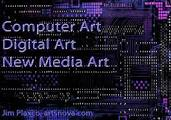


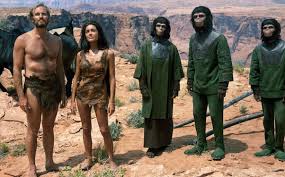
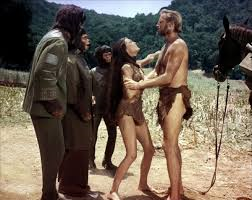


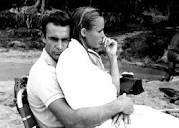

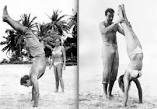
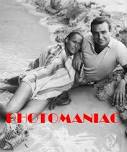


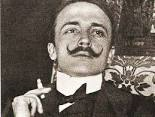

 1.
1. 2.
2. 3
3